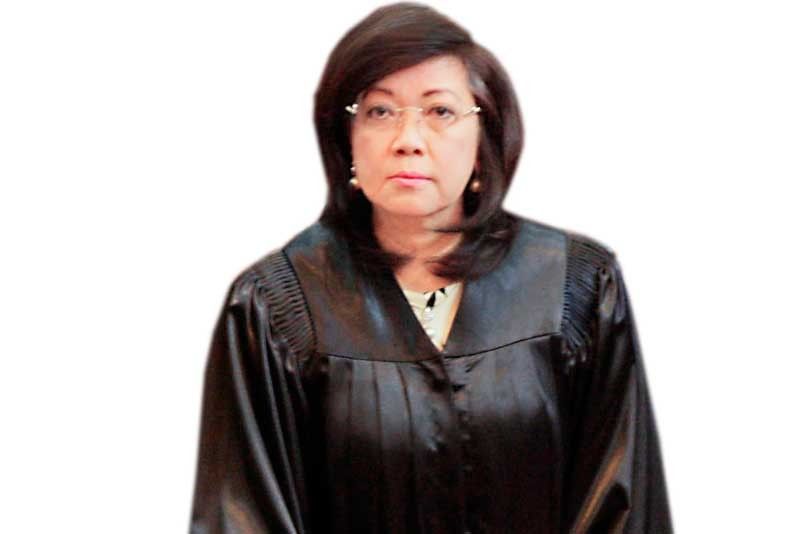Yearender: Chief justice falls in clash of Faura gods

MANILA, Philippines — The year 2018 saw clashes of the “gods of Padre Faura” ending with the ouster of Ma. Lourdes Sereno as chief justice, a move by her fellow magistrates that shaped a new direction for the Supreme Court (SC).
What was supposed to be a record 18-year term in the top judicial post was cut short to six years after a majority of Sereno’s colleagues in the high court decided to remove her through a controversial quo warranto petition filed by the solicitor general last May.
Sereno became the second chief justice to be removed after Renato Corona in 2012. Only this time, the impeachment case against Sereno no longer proceeded as her fellow justices – not Congress – speedily decided her fate.
Critics said the justices resented the appointment of a junior member as chief magistrate and had violated the Constitution, which allows the removal of a chief justice only by impeachment.
The critics also warned that the ruling compromised the independence of the Supreme Court, with the chief justice now facing possible ouster through a mere quo warranto petition filed by the chief lawyer of the executive branch.
After oral arguments on the case last April where the public witnessed a “shouting match” between Sereno and her nemesis in the SC, Teresita Leonardo-de Castro, the Court voted 8-6 and ruled that Sereno’s appointment in 2012 was invalid because she was not qualified for the post due to lack of proven integrity, a key constitutional requirement.
De Castro was then appointed chief justice, occupying the post for just over a month, but retiring with the full benefits and perks of the office. ?The SC ruling, which became final and executory last June, cited Sereno’s failure to submit all required statements of assets, liabilities and net worth (SALN) when she was teaching law at the University of the Philippines and during her application for the post, effectively reversing the finding of the Judicial and Bar Council (JBC) when it shortlisted her for the post.
JBC requires the submission of at least 10 SALNs but Sereno only submitted three – for 1998, 2002 and 2006 – and still made it to the shortlist. Former president Benigno Aquino III later appointed her.
The high tribunal held that Sereno could be removed via quo warranto proceedings since it is “separate and distinct from impeachment.”
The majority vote was composed of Associate Justices De Castro, Diosdado Peralta, Lucas Bersamin, Francis Jardeleza, Noel Tijam, Samuel Martires, Andres Reyes Jr. and Alexander Gesmundo.?Those who dissented were then acting Chief Justice Antonio Carpio and Associate Justices Presbitero Velasco Jr., Mariano del Castillo, Estela Bernabe, Marvic Leonen and Alfredo Benjamin Caguioa.
But unlike in Corona’s case and apart from ordering her to vacate her post, the SC also ordered an administrative case against Sereno for violations of the Code of Professional Responsibility and Code of Judicial Conduct “for transgressing the sub judice rule and for casting aspersions and ill motives to the members of the Supreme Court.”
Apparently not satisfied with her answers on why she attacked the justices during media and public appearances while the case was still being resolved, the Court initiated the administrative proceedings against her and later unanimously decided to cite her in contempt and penalized her with “reprimand” and a warning of harsher punishment upon repetition of her violations.
Unlike the ouster of Corona, her removal was welcomed by judges and court staff who held the “Black Friday” protests to support him. When Sereno faced impeachment, they staged a “Red Friday” protest and called for her resignation.
The SALN controversy was not the sole issue hurled against Sereno. She was also accused of enjoying lavish benefits for government officials, including the use of first-class flights and hotel accommodations during official trips and the use of a brand new P5-million Land Cruiser as service vehicle. Sereno also allegedly delayed appointments in key judicial positions supposedly to reserve them for her staff.
President Duterte named De Castro chief justice after the ouster. Unlike Sereno, who was a junior magistrate when appointed by Aquino in 2012, De Castro was the most senior of the SC justices nominated for the post.
Some quarters noted that the appointment of De Castro brought “normalcy” back to the Court as seniority in the judiciary was respected in appointing a chief justice.
When she assumed her post last August, De Castro said she wanted her brief leadership in the judicial branch to be remembered as the one “that restored collegiality in the Supreme Court” and “which was able to institute several reforms in the judicial processes.”
De Castro had criticized Sereno for making unilateral decisions on several administrative matters, which was not in sync with the collegial nature of the Court. Although De Castro made history as the shortest serving CJ, she was able to implement key programs and reforms in the judiciary.
Vacancies in key administrative positions were also filled after a long delay. Among the key appointments during De Castro’s tenure were Davao City regional trial court Judge Leo Madrazo as deputy court administrator for Mindanao, a position that was vacant for over one year or since July 2017; lawyer Ma. Carina Cunanan as SC deputy clerk of court and chief administrative officer, a position that had also been vacant since December 2017; and lawyer Librada Buena as new SC first division clerk of court in place of Felipa Anama, who retired from the judiciary earlier this year.
- Latest
- Trending




























